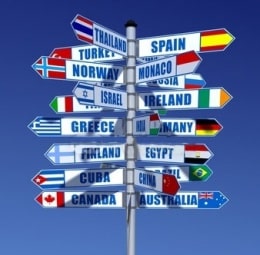Several of my most recent projects have involved some degree of localization, either directly for foreign markets or for documents intended for overseas customers. This has offered a series of opportunities and challenges that have allowed me to more fully participate in the global marketplace.
As a developer in Australia, it is easy to take for granted the relatively few language changes that exist from the international standard (English United States). Adding a ‘u’ to ‘color’ and changing VAT to GST are very small, non-structural changes. However, when translating to the cornucopia of languages around the world, there are several aspects to be considered to develop localized content and functionality, efficiently and effectively.
The primary concern is to ensure that translations are correct. While it is tempting to plug the English content into an online translator and trust what is returned, it is not that simple. No online translator understands the nuances or meaningfulness behind the words it suggests. Though it may take more time initially to confer with international partners/clients about correct translations, it saves time in the long run by not requiring translation hotfixes later.
However, ensuring correct translations is only the first step and can itself lead to complications. It is not only words but also sentence structure that can vary between languages. This can mean that it is not as simple as merely changing a word in localized content. It can, for example, require a structural foundation to allow for variables or data to be injected into captions in the correct place.
Once that is done, a length comparison should be performed between the original text and the translated text. The larger the difference between these two, the more likely it is that the document layouts will be affected. I would go so far as to suggest that a duplicate document that has been designed specifically around translated text is the best option. Additionally, what is required in your client country may not be applicable in your home country. In this situation, I recommend separating the functionality between the supported locales. Though maintaining two individual documents creates overhead, time is saved not trying to compromise functionality.
Developing for global markets is a rewarding and challenging experience. There are many aspects to consider to develop localized quality content, especially when developed in tandem with other languages.







